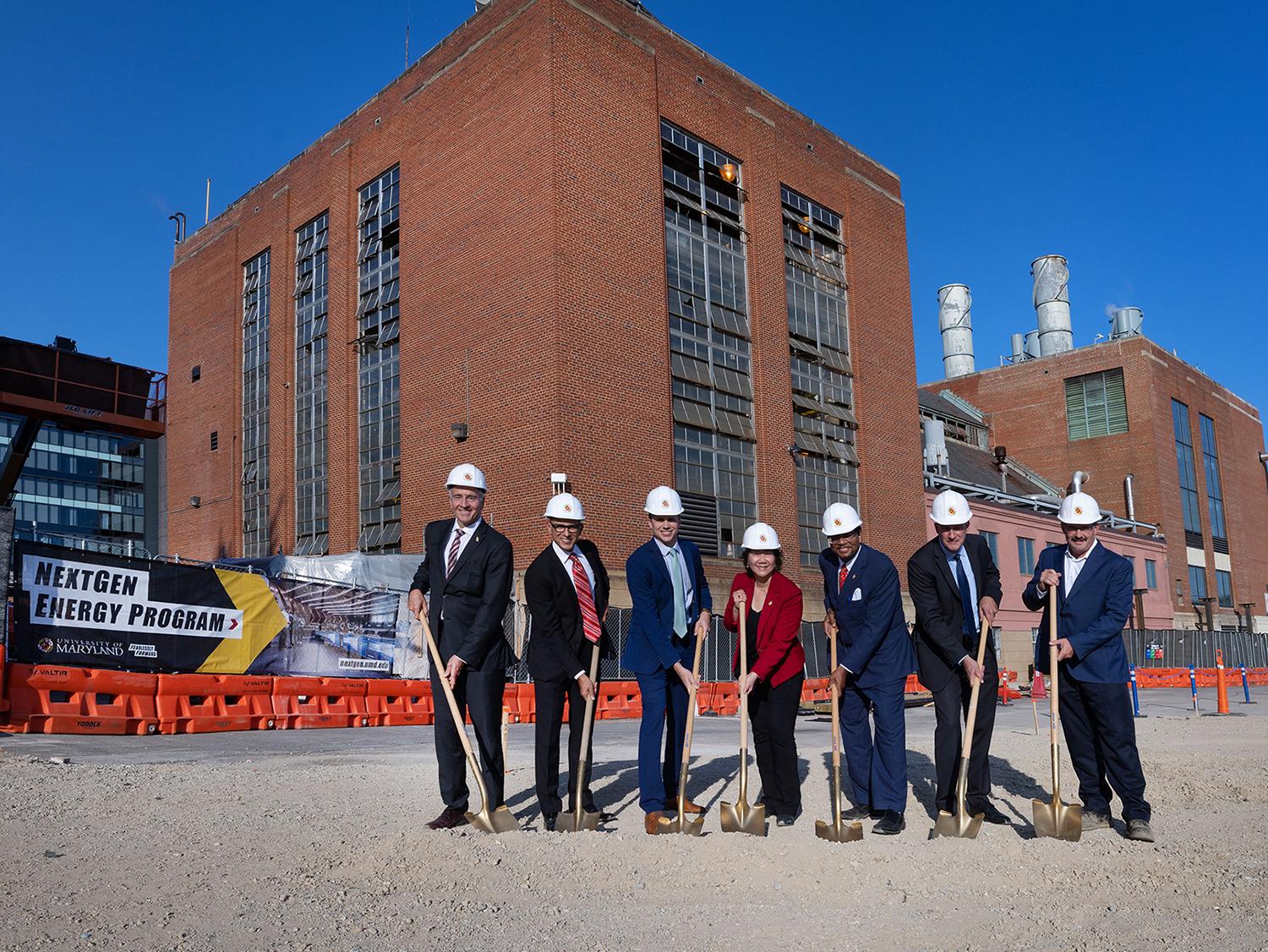The NextGen Energy Program
The Path to Our Sustainable Energy Future

A global leader in research, entrepreneurship, and innovation, UMD is home to more than 40,700 students, 14,000 faculty and staff, and 388,000 alumni. The College Park campus is a small city unto itself. To support this expansive enterprise, the university relies on a variety of energy sources, including wind, solar, and natural gas.
A carbon-neutral campus is a significant step, but now it’s time to set our sights on reducing UMD's dependency on fossil fuels. We are committed to a fossil fuel-free power plant under the NextGen Energy Program.

The NextGen Energy Program (NextGen) plays a critical role in ensuring that the University of Maryland can depend on a sustainable energy system for decades to come. NextGen puts UMD on a pathway to achieve the goal of a fossil fuel-free energy system by 2035 and increases efficiency and sustainability, reducing greenhouse gas emissions from the Central Energy Plant by 23% and saving 50% of the total water usage the plant requires annually.
NextGen leverages a public-private partnership to secure an innovative, effective, and financially efficient approach for the University. Our partner is Maryland Energy Impact Partners (MEIP), which includes Plenary Americas US Holdings Inc., Kiewit Development Company, Kiewit Power Constructors Co., and Honeywell International, Inc., a group of experienced operators.
Learn More About NextGen
2018: Kick-off meeting with university stakeholders and student leaders
2019: Ongoing collaboration with university stakeholders and student leaders
2020: Approved by the Maryland Board of Public Works
2021: Competitive procurement process with shortlisted proposers
2022: Two finalists selected; start of the Best and Final Offer stage of the procurement process
2023-2024: Identify private sector energy company and secure partnership approval from the Board of Public Works
2024 and Beyond: NextGen Implementation: Existing system maintenance and improvements; new system construction and transition
Facilities Management
Responsible for overseeing groups involved with the project and provides day-to-day management of the program and supports oversight of the plant.
Maryland Energy Impact Partners (MEIP)
UMD has contracted with Maryland Energy Impact Partners (MEIP) - a group of experienced operators, to design, engineer, finance and install energy system improvements. MEIP will also manage, operate, and maintain the university's energy systems.
Division of Administration
Responsible for NextGen governance and oversight through the management of the Program Implementation Council.
Department of Environmental Safety, Sustainability, and Risk (ESSR)
Provides leadership and expertise related to safety and environmental risk and ensures that the program advances carbon reduction efforts.
Project Brief pdf
